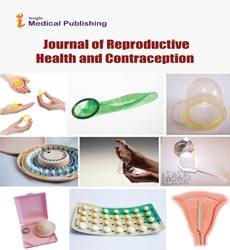Landscape Genomics and Signature Selection to Understand the Genetic Adaptation of Indigenous Cattle
Filipa Sousa
University Hospital Center of Coimbra, Portugal
Received Date: 2022-06-14 | Accepted Date: 2022-06-21 | Published Date: 2022-06-28Abstract
Introduction: Ovarian surgical ablation (OSA) in estrogen receptor-positive (ER+) breast cancer is usually performed to halt ovarian function in premenopausal patients. Since alternative pharmacological therapy exists and few studies have investigated why surgery is still performed, we aimed to analyze the reasons for the use of OSA despite the remaining controversy.
Materials and Methods: Premenopausal ER+ breast cancer patients treated at a tertiary center (2005– 2011) were selected, and patients with germ line mutations were excluded.
Results: Seventy-nine patients met the inclusion criteria. Globally, the main reasons for OSA included: continued menstruation despite hormone therapy with or without ovarian medical ablation (OMA) (34.2%), patient informed choice (31.6%), disease progression (16.5%), gynecological disease requiring surgery (13.9%), and tamoxifen intolerance/contraindication (3.8%). In women aged ≥45 years, patient choice was significantly more frequently the reason for OSA (47.4% versus 17.1% (p = 0.004)). For those aged <45 years, salvation attempts were significantly more frequent as compared to older women (26.8% versus 5.3% (p = 0.01)). In 77.8% of women undergoing OSA with menstrual cycle maintenance, surgery was performed 1–5 years after diagnosis, while surgery was performed earlier (0–3 months after diagnosis) in patients undergoing OSA as an informed choice (56.0%), as a salvation attempt (53.8%), or due to gynecological disease (63.6%). The leading reason for OSA in women previously undergoing OMA was continued menstruation (60.0%).
Conclusions: This study suggests a possible failure of pharmacological ovarian suppression and reinforces the need for shared decision-making with patients when discussing treatment strategies, although validation by further studies is warranted due to our limited sample size.
Open Access Journals
- Aquaculture & Veterinary Science
- Chemistry & Chemical Sciences
- Clinical Sciences
- Engineering
- General Science
- Genetics & Molecular Biology
- Health Care & Nursing
- Immunology & Microbiology
- Materials Science
- Mathematics & Physics
- Medical Sciences
- Neurology & Psychiatry
- Oncology & Cancer Science
- Pharmaceutical Sciences
